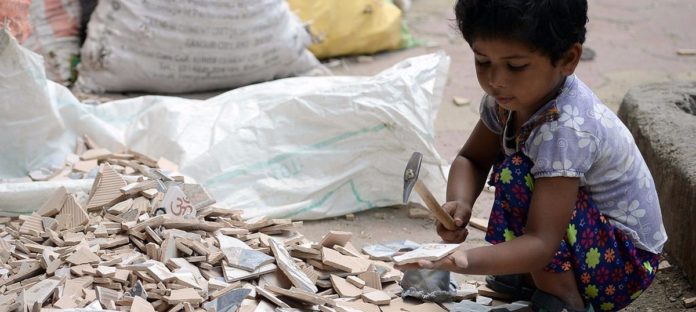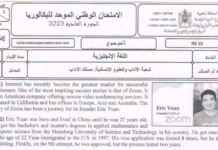The exam’s Comprehension Text
[1] Kapour is eight years old and works with his father in a shop in a village near New Delhi. Every morning, while carrying bags of vegetables to the shop, he runs into children wearing school uniforms. He feels ashamed at not being in a school uniform, carrying books instead of vegetables. Kapour is one of India’s five million school dropouts. These are children of migrant workers who come to the Indian capital and end up living in slums. Many of them can’t afford to send their children to school. Others are unable to provide birth certificates or proof of residence for their children, which are necessary for admission to school. Besides, there are some families, such as Kapour’s, that need their children to help around the house and look after their younger siblings.
[2] However, two yellow buses – equipped as mobile schools with a TV screen, books, puzzles and toys- are helping to provide these children with primary education. They are part of a government’s project which started in 2003, to get dropouts back into school. Every morning, the buses arrive near four selected slums. “If the children can’t go to school, we have to take the school to them, to their doorstep,” said Sudhama, a school bus teacher.
[3] Funded by the Department for International Development in India, the project has reduced the number of dropouts from 25 million to 5 million. One powerful incentive for parents is that the books are free and their children receive a piece of fruit every day. The project’s local representative said that it took time to build the parents’ confidence. At first, they hesitated to send their children because they were afraid of child trafficking. But they were eventually persuaded to do so. Some kids have lost a whole year; others have never been to school. The school bus teachers get them up to the right level and then send them to public schools.
[4] The children are proud because the school bus comes specially for them. It has changed their lives and given them hope. After joining the bus, Shivam, aged 9, was very happy with his new life and would run home to tell his mother everything he had learnt. Lately, he has been leading the class in chanting the Hindi alphabet. His mother was so impressed that she persuaded other mothers to send their children, too. Shaheen, who has spent a whole year attending the school bus, is one of the 200 children who have successfully joined primary schools. Her life has been transformed since she joined the school bus.” I couldn’t count and I could write only a few words of Hindi,” she said. “Now I do multiplication and division, and I know some English, too.” What she had learnt there helped her to pursue her studies at the local primary school without any difficulty.
Adapted from aljazeera.net/english
National exam | Arts Stream | Catch-up Session 2012 with Answers





